#Medes
Photo
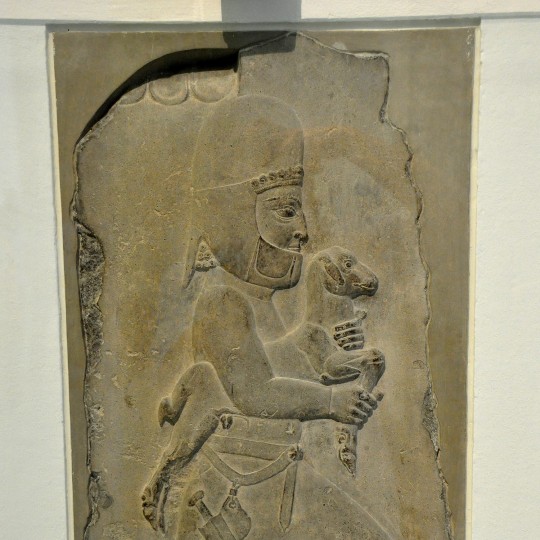
Medes
The Medes or Medians were a group of Indo-Iranian-speaking people from central Asia who migrated westwards and entered northern Iran around the end of the 2nd millennium BCE. They settled in the highlands of Zagros (Zagreus in Greek) and, by the end of the 7th century BCE, founded the kingdom of Media (Mada in Old Persian).
Continue reading...
161 notes
·
View notes
Note
Why did the Greeks hate pants? Did it have to do with the way they perceived masculinity?
Greek abhorrence for trousers (pants) is connected almost entirely to perception of them as barbaric attire. They were associated especially with the horse people of the steppes, such as Scythians, Sarmatians, (Amazons), but also the Medes. If barbarian initially just meant non-Greek speaker, over time, it acquired negative connotations. Also, for Greeks, there were “civilized” barbarians (e.g., Egyptians, Assyrians, Persians) and “wild” barbarians (Scythians, Celts, etc.) This seems odd to us, as the word “barbarian” immediately evokes uncivilized images, so how can you be a civilized barbarian? But again, barbaros simply meant anybody who didn’t speak Greek, literally “the bar-bar people” based sorta on Persian, which sounded to the Greek ear like “bar-bar-bar-bar.” So, it’s a slam, but in the more typical ethnocentric way of antiquity. Only after the Persian Wars did “barbarian” take on especially negative meanings.
In artwork, clothing is often used as a signifier of ethnicity.
Tunics, long or short, and kilts had been standard male dress in the ancient near east and Mediterranean for millennia. Ergo, the basic cut was culturally neutral, distinctions made in the weaving, design, cloth, draping, etc. This is why the average person can’t tell the difference between Greek, Roman, or Etruscan clothing. Or between Babylonian, Assyrian, Hittite, Canaanite. Egyptian is a bit more distinctive. But still, it takes time and exposure to learn to see the differences.
Yet trousers…now those look pretty different! Add in the funky jackets and hats, and people from the steppes looked quite different.
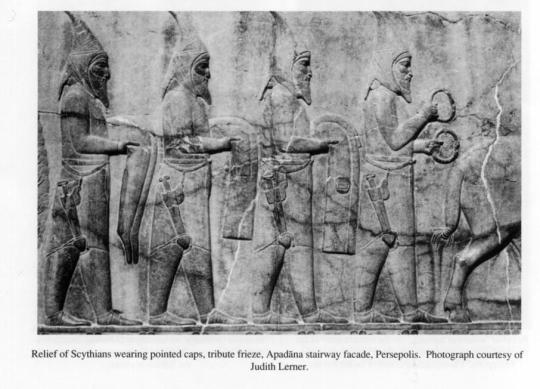
Why trousers? Pretty simple: weather/environment. The horse people on the steppes had to deal with much colder temperatures, In addition, they spent a lot of time on horseback. So trousers (and long-sleeved jackets) were just the thing! They also wore a head covering that sometimes veiled the mouth, even for men, no doubt to guard against dust when riding. They considered people who rode horses without trousers kinda crazy.
So trousers were startling to Greeks, and came to symbolize the exotic northerner. This is why Amazons usually wear trousers. Being originally from the steppe areas, the Medes also wore trousers, although the Persians, who migrated further south, adopted tunics. (Even then, they did occasionally wear loose trousers.)
As Medes and Persians became negativized after the Persian Wars, trousers also took on effeminate overtones because effeminizing the men of another culture was how Greeks insulted them: made them not so scary. Persians and Medes, like the Lydians and other ANE peoples, also liked highly patterned clothing, something again the Greeks associated with women.
In the Archaic era, wealthy Greeks, especially in the Asia Minor (Turkey) coastal cities and islands, also wore patterned clothing. But after the Persian Wars, the duller styles of Athens (and Sparta), and the mainland, gained traction, where patterns were restricted to borders, not the whole piece of cloth. Especially men who persisted in those “fancy” patterned clothes were the soft-living sort “like Persians.”

So that’s where the effeminizing of trousers came from. But there’s another component, related to horseback riding. Again, the steppe people thought anybody who rode horses a lot (as they did) and didn’t wear trousers, were nuts. There were no saddles in antiquity (or stirrups), just a saddlecloth (maybe). You stay on the horse by gripping with your thighs.
Remember, Greek men refused trousers and sometimes didn’t even wear underwear.
Now think about that, on horseback.
Those guys must have had some serious calluses!
“We’re TOUGH, we don’t need no stinkin’ trousers to protect us from riding rash!”
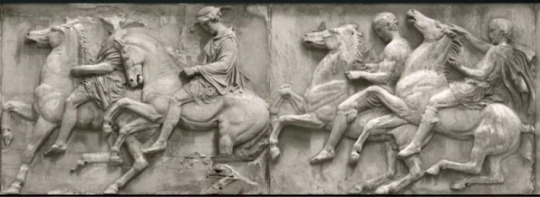
So yeah, testosterone poisoning combined with disdain for “barbarian” cultures, especially “wild barbarians,” led to a widespread contempt for trousers among Greek men of the Archaic, Classical and Hellenistic eras. (By the middle imperial period of Hadrian’s day, knee-length trousers were in, but I’m not a Romanist to know when this change occurred, or why.)
#ancient Greece#Ancient Persia#Medes#Median dress#ancient Greek horsemanship#trousers in the ancient world#Steppe horse people#Classics#tagamemnon#Amazons
359 notes
·
View notes
Text
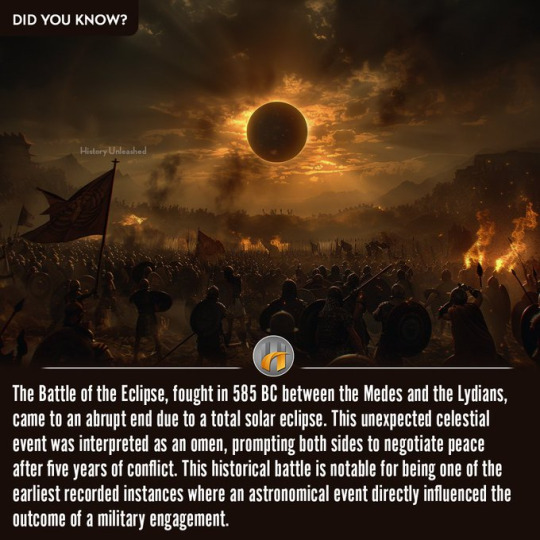
Eclipses have long held celestial/mythical importance and awing power in mythos and cultures across the world.
They are an event that literally have their own mythology - reasons for why they happen throughout ancient civilizations and the stories are wondrous and awesome.
#writers on tumblr#storytelling#writers and poets#creative writing#folklore#folktales#writers and writing#writerscommunity#eclipse#solar eclipse#lunar eclipse#Battle of the Eclipse#Medes#Lydians#omen#historic battle#historical war#military#sun and moon#moon and sun#myths#myths and legends#mythology#mythology and folklore#ancient civilizations#stories#mythos#culture#celestial#did you know
5 notes
·
View notes
Photo

Nature of Kurdistan by Kurdistan Photo كوردستان , https://flic.kr/p/2ouQbqY
8 notes
·
View notes
Text
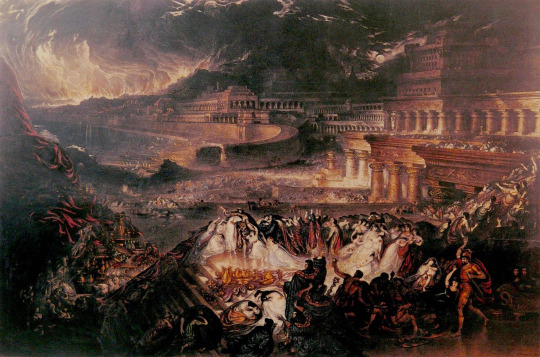
Fall of Nineveh by John Martin (1829)
"Nabopolassar (meaning "Nabu, protect the son") was the founder and first king of the Neo-Babylonian Empire, ruling from his coronation as king of Babylon in 626 BC to his death in 605 BC. Though initially only aimed at restoring and securing the independence of Babylonia, Nabopolassar's uprising against the Neo-Assyrian Empire, which had ruled Babylonia for more than a century, eventually led to the complete destruction of the Assyrian Empire and the rise of the Neo-Babylonian Empire in its place.
Of unclear, possibly Chaldean, origin and potentially connected to a powerful political family in the southern city of Uruk, Nabopolassar revolted against the Neo-Assyrian king Sinsharishkun at an opportune moment when Babylonia was already plagued by political instability. Though the advantage shifted back and forth dramatically several times, Nabopolassar managed to decisively push the Assyrians out of Babylonia after nearly ten years of fighting. Subsequent campaigns were intended to hinder the possibility of an Assyrian campaign directed at Babylonia through securing the border, but the intervention of the eastern Median Empire under Cyaxares in Nabopolassar's favor shifted the goals and the possibilities of the war.
In 614 BC, the Medes brutally sacked the city of Assur, the religious and ceremonial heart of Assyria, and in 612 BC the Medes and Babylonians assaulted Nineveh, Assyria's capital. As with Assur before it, Nineveh was brutally sacked, with its inhabitants, including children, slaughtered en masse and the entire city being burned to the ground. Sinsharishkun probably died in its defense. Other Assyrian cities, such as Nimrud, were also assaulted and sacked much in the same way. The brutality of the Medes, including their habit of sacking even the religious temples, was so excessive that it shocked the Babylonians; contemporary Babylonian chronicles, otherwise hostile to the Assyrians, lament the sackings with sorrow and remorse. Nabopolassar's own attitude towards Assyria is unclear; in some inscriptions he is careful to ascribe his victory and its aftermath to divine intervention to rid himself of the blame and in others he openly boasts of the destruction.
The Neo-Babylonian Empire's claim to succeed the Neo-Assyrian Empire was immediately challenged by Egypt under Pharaoh Necho II, who fought for several years to restore the Assyrians, whom he was allied to, until he was defeated at the Battle of Carchemish in 605 BC. Upon his death that same year, Nabopolassar was succeeded by his son Nebuchadnezzar II. As the founder of the Neo-Babylonian Empire, Nabopolassar was long remembered by the Babylonians after his death, even beyond the fall of his empire less than a century later. In the Hellenistic period, several centuries later, Nabopolassar's legend was still remembered, with Babylonian authors casting him as a champion ordered by Marduk, Babylon's chief deity, to avenge their homeland, and as a symbol against the domination of foreign empires over Babylon.
Nabopolassar's origins are unclear. In his own inscriptions, he refers to himself as a mâr lā mammâna ("son of a nobody"), a striking descriptor that is not known from any other Mesopotamian king. The two other Neo-Babylonian kings who had no blood connection to previous royalty; Neriglissar (r. 560–556 BC) and Nabonidus (r. 556–539 BC), nevertheless mentioned the names of their fathers and wrote about them with pride in their inscriptions. That Nabopolassar was the son of a nobody is almost certainly a lie; a person of truly obscure origins would have been unable to gather enough influence to become Babylon's king. On account of a lack of sources in regards to his true origins, subsequent historians have variously identified Nabopolassar as a Chaldean, an Assyrian or a Babylonian. Although no evidence conclusively confirms him as being of Chaldean origin, the term "Chaldean dynasty" is frequently used by modern historians for the royal family he founded, and the term "Chaldean Empire" remains in use as an alternate historiographical name for the Neo-Babylonian Empire. Several near-contemporary texts, such as the Uruk prophecy, describe Nabopolassar as a "king of the sea", i.e. of southernmost Babylonia, suggesting that his origin was south of Babylon itself. The Assyrians also ascribed him a southern origin; a letter from the Neo-Assyrian king Sinsharishkun (r. 627–612 BC) describes Nabopolassar as "of the lower sea", i.e. southernmost Mesopotamia.
Regardless of his ethnic origin, Nabopolassar appears to have been strongly connected to the city of Uruk, located south of Babylon, possibly having been a member of its ruling elite prior to becoming Babylon's king. In a 1998 paper, the Assyriologist Paul-Alain Beaulieu mentioned that there was a growing body of evidence that Nabopolassar's family originated in Uruk, and also presented evidence that several of Nebuchadnezzar II's (Nabopolassar's son and successor) daughters lived in the city. In 2007, the Assyriologist Michael Jursa advanced the theory that Nabopolassar was a member of a prominent political family in Uruk, whose members are attested since the reign of Esarhaddon (r. 681–669 BC). To support his theory, Jursa points to a letter from the time of Sinsharishkun, ABL 469, which discusses how the grave and body of Kudurru, a deceased governor of Uruk, was desecrated due to the anti-Assyrian activities of Kudurru's two sons, Nabu-shumu-ukin and a son whose name is mostly missing. The desecration went so far as to drag Kudurru's body through the streets of Uruk. Kudurru can be identified with Nebuchadnezzar (Nabû-kudurri-uṣur, "Kudurru" simply being a common and shortened nickname), a prominent official in Uruk who served as its governor under Ashurbanipal (r. 669–631 BC) in the 640s BC.
In Assyrian tradition, the desecration of a dead body showed that the deceased individual and their surviving family were traitors and enemies of the state, and that they had to be completely eradicated. The desecration of the body itself functioned as a means to punish an enemy even after their death. The name of the son whose name is unpreserved in the letter ended with either ahi, nâsir or uṣur, and the remaining traces can fit with the name Nabû-apla-uṣur, meaning that Nabopolassar could be the other son mentioned in the letter and thus a son of Kudurru. Strengthening the case that Kudurru was Nabopolassar's father is the name of Nabopolassar's son, also Nebuchadnezzar. At this time, Nebuchadnezzar was a very rare name in Babylonia. Since the Babylonians employed patronymics, it is possible that Nabopolassar would have named his son after his father. Before becoming king after Nabopolassar's death, Nebuchadnezzar II served as the high priest of the Eanna temple in Uruk, often attested there under the nickname Kudurru, further linking Nabopolassar's dynasty both to Uruk and to Kudurru. Additionally, the name of Kudurru's second son, Nabu-shumu-ukin, is also the name of a prominent general under Nabopolassar (a role not unlikely to be filled by a family member) and the name of one of Nebuchadnezzar II's sons (possibly another example of a name honoring a relative)."
-taken from wikipedia
#history#art#nabopolassar#babylonian#nineveh#assyrian#scythian#ancient history#sinsarishkun#persian history#cimmerian#medes#1800s art#pagan#paganism#john martin#chaldean
34 notes
·
View notes
Text
HISTORY OF ACHAEMENID IRAN
Tentative diagram of the 40-hour seminar
(in 80 parts of 30 minutes)
Prof. Muhammad Shamsaddin Megalommatis
Tuesday, 27 December 2022
--------------------------
To watch the videos, click here:
https://www.patreon.com/posts/history-of-iran-76436584
To hear the audio, click here:
-------------------------------------------

1 A - Achaemenid beginnings I A
Introduction; Iranian Achaemenid historiography; Problems of historiography continuity; Iranian posterior historiography; foreign historiography
1 B - Achaemenid beginnings I B
Western Orientalist historiography; early sources of Iranian History; Prehistory in the Iranian plateau and Mesopotamia
2 A - Achaemenid beginnings II A
Brief Diagram of the History of the Mesopotamian kingdoms and Empires down to Shalmaneser III (859-824 BCE) – with focus on relations with Zagros Mountains and the Iranian plateau
2 B - Achaemenid beginnings II B
The Neo-Assyrian Empire from Shalmaneser III (859-824 BCE) to Sargon of Assyria (722-705 BCE) – with focus on relations with Zagros Mountains and the Iranian plateau
3 A - Achaemenid beginnings III A
From Sennacherib (705-681 BCE) to Assurbanipal (669-625 BCE) to the end of Assyria (609 BCE) – with focus on relations with Zagros Mountains and the Iranian plateau
3 B - Achaemenid beginnings III B
The long shadow of the Mesopotamian Heritage: Assyria, Babylonia, Elam/Anshan, Kassites, Guti, Akkad, and Sumer / Religious conflicts of empires – Monotheism & Polytheism
4 A - Achaemenid beginnings IV A
The Sargonid dynasty and the Divine, Universal Empire – the Translatio Imperii
4 B - Achaemenid beginnings IV B
Assyrian Spirituality, Monotheism & Eschatology; the imperial concepts of Holy Land (vs. barbaric periphery) and Chosen People (vs. barbarians)
5 A - Achaemenid beginnings V A
The Medes from Deioces to Cyaxares & Astyages
The early Achaemenids (Achaemenes & the Teispids)
5 B - Achaemenid beginnings V B
- Why the 'Medes' and why the 'Persians'?
What enabled these nations to form empires?
6 A - Zoroaster A
Shamanism-Tengrism; the life of Zoroaster; Avesta and Zoroastrianism
6 B - Zoroaster B
Mithraism vs. Zoroastrianism; the historical stages of Zoroaster's preaching and religion
7 A - Cyrus the Great (Cyrus II) I A
The end of Assyria, Nabonid Babylonia, and the Medes
7 B - Cyrus the Great (Cyrus II) I B
The Nabonidus Chronicle
8 A - Cyrus the Great (Cyrus II) II A
Cyrus' battles against the Medes
8 B - Cyrus the Great (Cyrus II) II B
Cyrus' battles against the Lydians
9 Α - Cyrus the Great (Cyrus II) III A
The Battle of Opis: the facts
9 Β - Cyrus the Great (Cyrus II) III B
Why Babylon fell without resistance
10 A - Cyrus the Great (Cyrus II) IV A
Cyrus Cylinder: text discovery and analysis
10 B - Cyrus the Great (Cyrus II) IV B
Cyrus Cylinder: historical continuity in Esagila
11 A - Cyrus the Great (Cyrus II) V A
Cyrus' Empire as continuation of the Neo-Assyrian Empire
11 B - Cyrus the Great (Cyrus II) V B
Cyrus' Empire and the dangers for Egypt
12 A - Cyrus the Great (Cyrus II) VI A
Death of Cyrus; Tomb at Pasargad
12 B - Cyrus the Great (Cyrus II) VI B
Posterity and worldwide importance of Cyrus the Great
13 A - Cambyses I A
Conquest of Egypt and Cush (Ethiopia: Sudan)
13 B - Cambyses I B
Iran as successor of Assyria in Egypt, and the grave implications of the Iranian conquest of Egypt
14 A - Cambyses II A
Cambyses' adamant monotheism, his clash with the Memphitic polytheists, and the falsehood diffused against him (from Egypt to Greece)
14 B - Cambyses II B
The reasons for the assassination of Cambyses
15 A - Darius the Great I A
The Mithraic Magi, Gaumata, and the usurpation of the Achaemenid throne
15 B - Darius the Great I B
Darius' ascension to the throne
16 A - Darius the Great II A
The Behistun inscription
16 B - Darius the Great II B
The Iranian Empire according to the Behistun inscription
17 A - Darius the Great III A
Military campaign in Egypt & the Suez Canal
17 B - Darius the Great III B
Babylonian revolt, campaign in the Indus Valley
18 A - Darius the Great IV A
Darius' Scythian and Balkan campaigns; Herodotus' fake stories
18 B - Darius the Great IV B
Anti-Iranian priests of Memphis and Egyptian rebels turning Greek traitors against the Oracle at Delphi, Ancient Greece's holiest shrine
19 A - Darius the Great V A
Administration of the Empire; economy & coinage
19 B - Darius the Great V B
World trade across lands, deserts and seas
20 A - Darius the Great VI A
Rejection of the Modern European fallacy of 'Classic' era and Classicism
20 B - Darius the Great VI B
Darius the Great as the end of the Ancient World and the beginning of the Late Antiquity (522 BCE – 622 CE)
21 A - Achaemenids, Zoroastrianism, Mithraism, and the Magi A
Avesta and the establishment of the ideal empire
21 B - Achaemenids, Zoroastrianism, Mithraism, and the Magi B
The ceaseless, internal strife that brought down the Xšāça (: Empire)
22 A - The Empire-Garden, Embodiment of the Paradise A
The inalienable Sargonid-Achaemenid continuity as the link between Cosmogony, Cosmology and Eschatology
22 B - The Empire-Garden, Embodiment of the Paradise B
The Garden, the Holy Tree, and the Empire
23 A - Xerxes the Great I A
Xerxes' rule; his upbringing and personality
23 B - Xerxes the Great I B
Xerxes' rule; his imperial education
24 A - Xerxes the Great II A
Imperial governance and military campaigns
24 B - Xerxes the Great II B
The Anti-Iranian complex of inferiority of the 'Greek' barbarians (the so-called 'Greco-Persian wars')
25 A - Parsa (Persepolis) A
The most magnificent capital of the pre-Islamic world
25 B - Parsa (Persepolis) B
Naqsh-e Rustam: the Achaemenid necropolis: the sanctity of the mountain; the Achaemenid-Sassanid continuity of cultural integrity and national identity
26 A - Iran & the Periphery A
Caucasus, Central Asia, Siberia, Tibet and China Hind (India), Bengal, Deccan and Yemen
26 B - Iran & the Periphery B
Sudan, Carthage and Rome
27 A - The Anti-Iranian rancor of the Egyptian Memphitic priests A
The real cause of the so-called 'Greco-Persian wars', and the use of the Greeks that the Egyptian Memphitic priests made
27 B - The Anti-Iranian rancor of the Egyptian Memphitic priests B
Battle of the Eurymedon River; Egypt and the Wars of the Delian League
28 A - Civilized Empire & Barbarian Republic A
The incomparable superiority of Iran opposite the chaotic periphery: the Divine Empire
28 B - Civilized Empire & Barbarian Republic B
Why the 'Greeks' and the Romans were unable to form a proper empire
29 A - Artaxerxes I (465-424 BCE) A
Revolt in Egypt; the 'Greeks' and their shame: they ran to Persepolis as suppliants
29 B - Artaxerxes I (465-424 BCE) B
Aramaeans and Jews in the Achaemenid Court
30 A - Interregnum (424-403 BCE) A
Xerxes II, Sogdianus, and Darius II
30 B - Interregnum (424-403 BCE) B
The Elephantine papyri and ostraca; Aramaeans, Jews, Phoenicians and Ionians
31 A - Artaxerxes II (405-359 BCE) & Artaxerxes III (359-338 BCE) A
Revolts instigated by the Memphitic priests of Egypt and the Mithraic subversion of the Empire
31 B - Artaxerxes II (405-359 BCE) & Artaxerxes III (359-338 BCE) B
Artaxerxes II's capitulation to the Magi and the unbalancing of the Empire / Cyrus the Younger
32 A - Artaxerxes IV & Darius III A
The decomposition of the Empire
32 B - Artaxerxes IV & Darius III B
Legendary historiography
33 A - Alexander's Invasion of Iran A
The military campaigns
33 B - Alexander's Invasion of Iran B
Alexander's voluntary Iranization/Orientalization
34 A - Alexander: absolute rejection of Ancient Greece A
The re-organization of Iran; the Oriental manners of Alexander, and his death
34 B - Alexander: absolute rejection of Ancient Greece B
The split of the Empire; the Epigones and the rise of the Orientalistic (not Hellenistic) world
35 A - Achaemenid Iran – Army A
Military History
35 B - Achaemenid Iran – Army B
Achaemenid empire, Sassanid militarism & Islamic Iranian epics and legends
36 A - Achaemenid Iran & East-West / North-South Trade A
The development of the trade between Egypt, Anatolia, Mesopotamia, Iran, Turan (Central Asia), Indus Valley, Deccan, Yemen, East Africa & China
36 B - Achaemenid Iran & East-West / North-South Trade B
East-West / North-South Trade and the increased importance of Mesopotamia and Egypt
37 A - Achaemenid Iran: Languages and scripts A
Old Achaemenid, Aramaic, Sabaean and the formation of other writing systems
37 B - Achaemenid Iran: Languages and scripts B
Aramaic as an international language
38 A - Achaemenid Iran: Religions A
Rise of a multicultural and multi-religious world
38 B - Achaemenid Iran: Religions B
Collapse of traditional religions; rise of religious syncretism
39 A - Achaemenid Iran: Art and Architecture A
Major archaeological sites of Achaemenid Iran
39 B - Achaemenid Iran: Art and Architecture B
The radiation of Iranian Art
40 A - Achaemenid Iran: Historical Importance A
The role of Iran in the interconnection between Asia and Africa
40 B - Achaemenid Iran: Historical Importance B
The role of Iran in the interconnection between Asia and Europe
--------------------------------------
Download the diagram here:
#Achaemenid#Megalommatis#Ancient Iran#Old Achaemenid#Persia#Persians#Media#Orientalism#Medes#History of Ancient Iran
3 notes
·
View notes
Note
Love the blorbo playlist! Which character has Standing by VNV Nation?
This is a very old ask, oops! (And btw I added a bunch of stuff to the playlist earlier this week.)
"Standing" belongs to Alethea Ruth Medes, my Starfleet Engineer. Medes was assigned to a station near a temporal anomaly, met Havaris Kusto (now Havaris Medes Kusto), converted to Prophet worship, married a Resistance veteran who was exiled from Bajor because Politics and had ended up in Starfleet, went through a ton of time/alternate timelines shenanigans, had her hair burned off so many times by Unfortunate Accidents that she just started shaving her head (seriously, her dice are either Amazing or Terrible), got Havaris un-exiled, went through the Dominion War, lost her mother in the Breen attack on Earth, helped liberate Betazed, was assigned off of the station when I broke up with the abusive cock who ran the game in question, he wrote a reality where time broke up Havaris and Medes, someone else took over the game a few years ago and then we said "fuck you Kevin" and fixed the timeline with the Orb of Time, and now she just got assigned command of a joint operations base in the Delta Quadrant.
All the time shenanigans make the song kind of ironic, but.
Look at this nerd. She's going to be so annoyed when Ross tells her she has to wear red now. At least she gets more pips.

9 notes
·
View notes
Text
BEHOLD, I SHALL STIR UP THE MEDES AGAINST THEM-(PART 18)
BEHOLD, I SHALL STIR UP THE MEDES AGAINST THEM-(PART 18)
THE AMALEKITE-EDOMITE-KHAZARIAN ROMAN CAUCASIAN STATE BOMBS THE IRANIAN CONSULATE-EMBASSY IN SYRIA, THE MEDO-PERSIANS ONLY DESIRE RECOMPENSE, VENGEANCE, BLOOD, JUDGEMENT, DEATH, AMEN...
FROM THE KING JAMES BIBLE (KJV 1611)
BY BROTHER J.R. WILLIS
THE LORD IS STIRRING UP THE MEDES AGAINST BABYLON-AMERICA-EDOM, AMEN:
United States of America, you are the Virgin Daughter of Babel, and soon the Edomite stronghold of Babylon the Great shall perish as it is written, Amen.
EDOM-(THE CAUCASIAN NATIONS), ARE THE VIRGIN DAUGHTER OF BABYLON & MUST DIE, THUS SAYETH THE LORD. THE MOST HIGH SHALL BURN AND DASH EDOM AND THEIR LYING BOULDER-ROCK HEADED DEMONIC SERPENT CHILDREN TO PIECES BY WAY OF THE MEDES-(IRAN):
MIGHTY KING DAVID OFJUDAH-YUDAH PROPHESIES AND SPEAKS AGAINST BABEL-EDOM:
PSALM 137:7-9
7 Remember, O LORD, the children of Edom-(THE CAUCASIAN NATIONS), in the day of Jerusalem; who said, Rase it, rase it, even to the foundation thereof-(THE YEAR 586 BC, ANCIENT NEO- BABYLONIAN INVASION OF THE SOUTHERN KINGDOM BY CUSHITE-HAMITE KING NEBUCHENEZZER, OF CHALDEA, EDOM WHO ARE THE NEW SPIRITUAL BABYLONIANS-CHALDEANS, ASSISITED ANCIENT BABEL TO TAKE US YUDAH-JUDAH, INTO CAPTIVITY, AS THEY DESTROYED OUR HOLY TEMPLE, THEY CRIED & CHANTED, [RAISE IT, RAISE IT-DESTROY-LEVEL IT], UNTO THE FOUNDATIONS, ESAU-EDOM MUST DIE, AMEN),
THE 7 YEAR LONG BLOODY BATTLE OF MASADA- JERUSALEM, ISRAEL-OVER ONE MILLION BLACK JEWS ARE SLAUTERED & ENSLAVED BY EDOMITE ROME-RAISE IT, RAISE IT THE EDOMITES CRIED ALOUD WHILE THESE WRETCHED HEATHEN, RED- FACED SERPENT SEED DEVILS DESTROYED OUR HOLY TEMPLE TO THE FOUNDATION-([ROMAN GENERALS & CAESARS, VESPESIAN & TITUS).
8 O daughter of Babylon-(AMERICA-ESAU-AMALEK-EDOM-THE CAUCASIAN NATIONS-THE DAUGHTER OF EDOM-THE MOST HIGH IS CLEARLY DISTINGUISHING ANCIENT CHALDEA FROM THE NEW SPIRITUAL CHALDEA AS AMERICA IS THE –[VIRGIN DAUGHTER OF BABYLON, SHE IS A VIRGIN DAUGHTER OF ANCIENT BABYLON AND OF ROME BECAUSE SHE IS THE EPIDEMY & HEIGHT OF THE BABYLONIAN SECRET MYSTERY RELIGIOUS OCCULT & BECAUSE SHE HAS NEVER BEEN INVADED OR TOUCHED BY FOREIGN MILITARY CONFLICT, BUT SOON THIS GREAT WHORE WHO SITS UPON MANY WATERS SHALL BARE IT ALL, AND ALL WITHIN HER SHALL BE BURNT TO THE FOUNDATION THEREOF,AMEN),
who art to be destroyed; happy shall he be, that rewardeth thee as thou hast served us-(BABEL-BABYLON AMERICA IS THE SWORD & HAMMER OF THE EARTH THROUGH THEIR EDOMITE ROMAN MILITARY-EDOM SERVED THE MOST HIGH TO CHASTISE, SPANK & EXACT GREAT FATHER AHAYAH'S JUDGEMENT UPON THE NATIONS & VENGENCE UPON TRUE YISRAEL SO THAT WE MAY REPENT AND COME BACK TO OUR GLORIOUS FATHER IN THESE VERY END TIMES-AMEN).
9 Happy shall he be, that taketh and dasheth thy little ones against the stones-(EDOM DASHED THE BRAINS OF OUR LITTLE ONES AGAINST THE STONES FOR COUNTLESS GENERATIONS-IT IS ONLY FITTING THAT IT SHALL BE DONE BACK UNTO YOU-THE LORD IS A MOST FAIR & JUST ELOHIM-AMEN).
ISAIAH 13:17-22
17 Behold, I will stir up the Medes-(PRESENT DAY MEDO-PERSIANS-IRAN) against them-(BABYLON-AMERICA-THE AMALEKITE NON JEW-ISH STATE), which shall not regard silver;
18 and as for gold, they shall not delight in it-(AMERICA CANNOT BUY OUT THE PERSIANS AS THEY HAVE DONE TO THE REST OF THE MIDDLE-EAST & ISHMAEL WHO ARE THE ARAB NATIONS-SAUDI ARABIA).
19 Their bows-(CONVENTIONAL BOMBS-NUCLEAR WEAPONRY-THE SWORD-THE WASTER), also shall dash the young men to pieces; and they shall have no pity on the fruit of the womb;
20 their eyes shall not spare children-(NOT EVEN THOSE GIVING BIRTH IN HOSPITALS OR THEIR CHILDREN SHALL BE SPARED FROM THE ATTACK BY THE IRANIANS-TRUE TERRORISM SHALL COME FROM THE IRANIANS UPON THE WEST LIKE NEVER BEFORE).
And Babylon-(AMERICA), the glory of kingdoms, the beauty of the Chaldees-(ANCIENT BABYLONIAN SORCERERS-RICH WISE MEN-ESAU EDOM ARE THE NEW SPIRITUAL CHALDEANS)' excellency, shall be as when God overthrew Sodom and Gomorrah-(COMPLETE NUCLEAR FIRE & BRIMSTONE).
21 “But wild beasts of the desert shall lie there-(YEMIM); and their houses shall be full of doleful creatures-(THE YEMIM-EMIM-IMIM); and owls shall dwell there, and satyrs shall dance there-(YEMIM).”
22 It shall never be inhabited, neither shall it be dwelt in from generation to generation: neither shall the Arabian pitch tent there-(NO MORE FOREIGN MERCHANTS SELLING GOODS & MAKING A LIFE THERE);
22 neither shall the shepherds make their fold there-(NEVER AGAIN SHALL FOREIGNERS-THE HEATHEN GENTILE NATIONS MAKE FORTUNES DWELLING IN THAT WICKED NATION AS SHE IS BROUGHT TO COMPLETE RUIN & DESTRUCTION).
ISAIAH 13:19
19. “And Babylon-(AMERICA), the glory of kingdoms, the beauty of the Chaldees' excellency, shall be as when God overthrew Sodom and Gomorrah-(FIRE & BRIMSTONE-NUCLEAR WAR).”
****IMPORTANT NOTES****
(ARTICLE EXCERPT): 4-11-2024
PRESS TV DOT IR
'Punishing aggressor a necessity', Iran FM tells German counterpart
Thursday, 11 April 2024 5:33 PM [ Last Update: Thursday, 11 April 2024 6:19 PM ]
Iran's Foreign Minister Hossein Amir-Abdollahian and his German counterpart Annalena Baerbock held phone talks on Thursday.
Iran's foreign minister has told his German counterpart that "legitimate defense with the aim of punishing the aggressor is a necessity" after Israel's April 1 airstrike on the Iranian consular section in Damascus.
Hossein Amir-Abdollahian and Annalena Baerbock held phone talks on Thursday, during which the top Iranian diplomat also criticized Germany for its "neutrality" on the Israeli genocide in the Gaza Strip.
Iran has pledged retaliation for the Israeli airstrike that killed seven Iranian military advisors at its diplomatic annex in the Syrian capital.
"When the Israeli regime completely violates the immunity of individuals and diplomatic places in violation of international law and the Vienna Conventions, legitimate defense is a necessity," Amir-Abdollahian said, according to a statement issued by the foreign ministry in Tehran.
The statement said the two ministers discussed the latest developments in the region and bilateral relations, emphasizing the necessity to maintain the path of dialog.
"The foreign policy of the Islamic Republic of Iran is always based on avoiding tension," Amir-Abdollahian said.
Iran, the minister said, expected Germany to clearly condemn the Israeli crime in killing its military advisors.
"If a similar missile attack had taken place on one of the diplomatic places in the war zone in Ukraine, would the reaction of the United States and Europe have been the same?" he said.
Amir-Abdollahian addressed Baerbock's remarks about the need for a ceasefire in the Gaza war and the failure of efforts to halt the Israeli invasion of the besieged Palestinian territory.
"The reason why Germany's efforts to establish a ceasefire in Gaza have been fruitless should be found in the lack of German neutrality in this genocide," the Iranian minister said.
"Israel is an occupying regime and Palestine has the right to legitimate defense. In this regard, the only way to solve the current problems is to end the genocide and war crimes in Gaza," he added.
Amir-Abdollahian welcomed the resolution of misunderstandings between Tehran and Berlin regarding human rights.
In February, Baerbock appealed for an extension of a UN mission about 2022 riots in Iran during her speech to the 55th session of the UN Human Rights Council in Geneva.
"We expect Germany not to repeat baseless accusations against Iran and to defend the rights of thousands of women and children in Gaza and other parts of the world, where women's rights are constantly violated," Amir-Abdollahian said.
Baerbock spoke with her Iranian counterpart about "the tense situation in the Middle East" and the need for restraint, the German foreign ministry said.
"Avoiding further regional escalation must be in everyone's interest. We urge all actors in the region to act responsibly and exercise maximum restraint," the ministry wrote on X, formerly Twitter.
The Iranian foreign ministry readout said Baerbock congratulated the advent of Eid al-Fitr, stressing that the Muslim festival carries the message of peace.
"In this tense situation, Germany requests restraint from the Islamic Republic of Iran," she said, it added.
As for the Israeli attack on Iran's consular section in Damascus, the German foreign minister said her country "clearly emphasized that diplomatic places enjoy complete immunity", the Iranian foreign ministry statement said.
The German government, she said, has tried and is trying to end the war in Gaza through a political solution, according to the statement.
****CONCLUSION****
THE LION OF JUDAH-YUDAH IS COMING TO DESTROY ALL HEATHEN NATIONS:
JEREMIAS 4:7
7. “The lion is come up from his thicket, and the destroyer of the Gentiles is on his way; he is gone forth from his place to make thy land desolate; and thy cities shall be laid waste, without an inhabitant.”
For Judgement-(DEATH), comes for Esau who is Amalek, who are Edom, which are the Caucasian nations by way of the WRATH OF THE LAMB.
REVELATION 2:9
9. I know thy works, and tribulation, and poverty, (but thou art rich)-(LORD YASHAYA KNOWS OUR OPPRESSION-AFFLICTION & DESTRUCTION AT THE HANDS OF OUR ENEMIES AS HE HIMSELF ENDURED THEM FOR US-BUT WE ARE RICH BECAUSE WE ARE THE LORD’S HERITAGE-WE ARE THE WORLD & THE WORLD WAS CREATED FOR US), and I know the blasphemy of them which say they are Jews-(AMALEK-EDOM-THE CAUCASIAN NATIONS), and are not, but are the synagogue of Satan-(THESE WICKED SERPENTS ARE THE CHIEF HOUSE OF THE DEVIL HIMSELF).
***END OF SUMMARY***
NOW WHO SHALL DENY THIS REPORT?
J.R.WILLIS-(YUNATHUN ZION)
AUTHOR: A RACE OF DEMONS REFINED 2017
AUTHOR: SPIRITUAL CRIMES 2018
AUTHOR: THE PROPHECIES
AUTHOR: THE BOOK OF DAEMONOLOGIE YEAR 2020
0 notes
Text
Daniel and the lions den

View On WordPress
#Babylon#Bible#Daniel#Events#Faith#God#Hebrews#Jealousy#Jesus#King Darius#Life#LIONS#Lions den#Medes
0 notes
Text
Iran
Iran is a country located in the Middle East, bordered by Armenia, Azerbaijan, Turkmenistan, Afghanistan, Pakistan, and Iraq. It has an area of 1,648,195 square kilometers, making it the 17th largest country in the world. With a population of approximately 84 million, Iran is the 18th most populous country globally. Iran is known for its rich history and culture, with its ancient Persian empire…
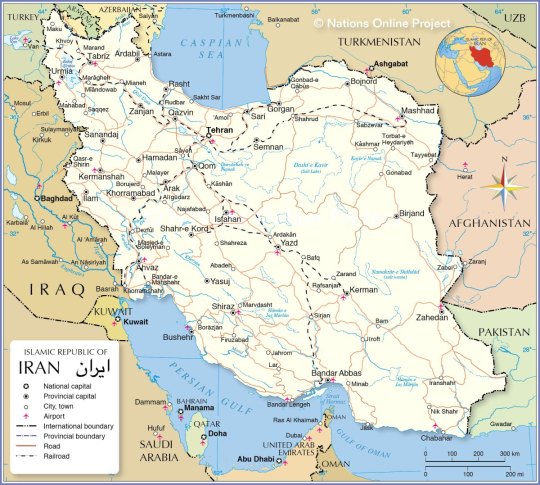
View On WordPress
#Achaemenids#Alexander the Great#Ayatollah Ruhollah Khomeini#Islamic#Medes#Middle East#Mohammad Reza Pahlavi#Parthians#Reza Shah Pahlavi#Safavids#Sassanids#Shah
1 note
·
View note
Photo

navegant en aquest mar de canvis ⛵️ . després de 15 dies en aquest paradís avui agafem un nou rumb 🧭 . 🤙 @buragun . . . . . . . . . . . #illesmedes #medes #empordà #costabrava (at L'estartit - Illes Medes) https://www.instagram.com/p/CpcLN7djxqU/?igshid=NGJjMDIxMWI=
0 notes
Text
MYSTERY OF THE STURBRIDGE KEYS ~ Fiction Time Travel Novel ~ Brie Babysits 2-Year-Old Jesus
MYSTERY OF THE STURBRIDGE KEYS ~ Fiction Time Travel Novel ~ Brie Babysits 2-Year-Old Jesus
https://www.iuniverse.com/BookStore/BokDetails/747239-Mystery-of-the-Sturbridge-Keys
Brie is the thirteen-year-old protagonist of this fiction novel, at a time when a young, strong, female character is so needed in the world. She deals with individuality and relationships, and comes to realize there is only one race, the human race. She time travels to the birth of Jesus in a stable, hears the…

View On WordPress
#Abraham Lincoln#Andrew Jackson#angels#Babylonia#Bactrian camels#Bethlehem#Charles Darwin#choirs of angels#Christmas#Christmas By CandleLight#fiction#God&039;Holy Spirit#Greek Empire#Harriet Tubman#holidays#Jesus#Medes#Mediterrnean Sea#Nephilim#Noah#novel#Olde Sturbridge Village#Panic of 1837#Paul#Persians#President#Rev. Adin Ballou#Roman#Roman Empire#Samothrace
0 notes
Text
Isaiah 13: Shades of Babylon
What can we make of the strange juxtaposition of far future judgement and distant past Babylon? #Isaiah13 #Babylon #DayoftheLord
At first glance, this oracle seems to encompass a final day of judgment and wrath that sweeps up the entire globe in an event still future to us today.
Yet, tucked into this far-reaching oracle are also mentions of Babylon, an empire long since crumbled into dust, with only the remnants of its grandeur ensconced in museums here and there.
What do we make of this strange juxtaposition?
Let us…
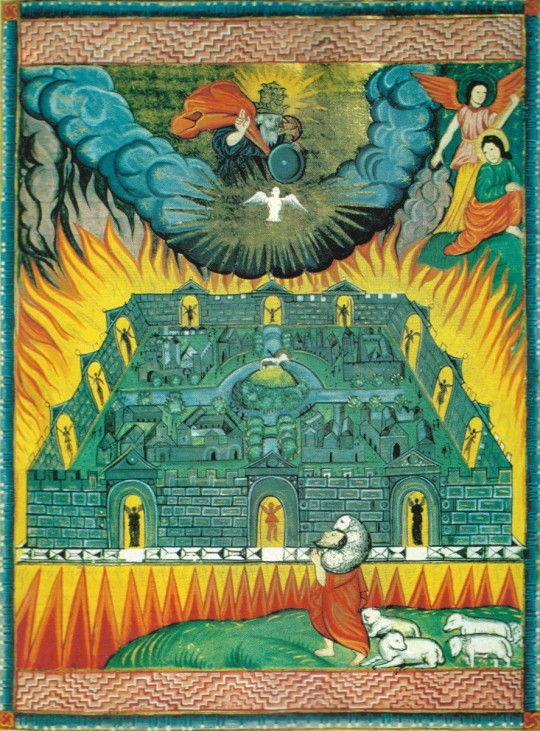
View On WordPress
#Apocalypse#Assyrians#Babylon#Babylonians#daniel 5#Day of the Lord#isaiah 13#Matthew 24#Medes#Zechariah 14
1 note
·
View note
Photo

Çarşema Sor by Kurdistan Photo كوردستان Cejna Çarşema Sor li we pîroz be ژبو هەمو ئێزیدیا : جەژنا خیشکو برایێت ئێزدی پیرۆز کەم و هیڤیدارم ئەڤ جەژنە مللەتئ مە کەیف خوش و سەر فراز کەت هەمی ئێش و نەخوشیێن مللەتئ ئێزدی وەندا کەت 🙏 لكل الايزيدين : كل عام وانتم بخير ، و عيدكم مبارك اتمنى آن يطوي هذا العيد اخر صفحة من صفحات الظلم و الاضطهاد الذي عاناه شعبنا الايزيدي https://flic.kr/p/2ouVquA
4 notes
·
View notes
Text
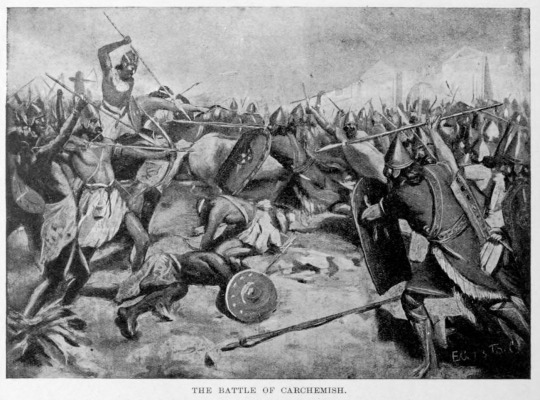
The Battle of Carchemish by A. C. Weatherstone 1915. Illustration from 'Hutchinson's History of the Nations', 1915.
"The Battle of Carchemish was fought about 605 BC between the armies of Egypt allied with the remnants of the army of the former Assyrian Empire against the armies of Babylonia, allied with the Medes, Persians, and Scythians. This was while Nebuchadnezzar was commander-in-chief and Nabopolassar was still king of Babylon. Nebuchadnezzar became king right after this battle.
When the Assyrian capital, Nineveh, was overrun by the Medes, Scythians, Babylonians and their allies in 612 BC, the Assyrians moved their capital to Harran. When Harran was captured by the alliance in 609 BC, ending the Assyrian Empire, remnants of the Assyrian army joined Carchemish, a city under Egyptian rule, on the Euphrates. Egypt, a former vassal of Assyria, was allied with Assyrian King Ashur-uballit II and marched in 609 BC to his aid against the Babylonians.
The Egyptian army of Pharaoh Necho II was delayed at Megiddo by the forces of King Josiah of Judah. Josiah was killed, and his army was defeated at the Battle of Megiddo.
The Egyptians and the Assyrians together crossed the Euphrates and laid siege to Harran, which they failed to retake. They then retreated to northwestern Assyria in what is now northeastern Syria.
The Egyptians met the full might of the Babylonian and Median army led by Nebuchadnezzar II at Carchemish, where the combined Egyptian and Assyrian forces were destroyed. Assyria ceased to exist as an independent power, and Egypt retreated and was no longer a significant force in the Ancient Near East. Babylonia reached its economic peak after 605 BC."
-taken from wikipedia
#assyrian#babylonian#egyptian#scythian#persian#nebuchadnezzar#nabopolassar#a.c. weatherstone#1900s art#history#ancient history#art#pharaoh necho ii#medes#7th century bce
12 notes
·
View notes
Photo




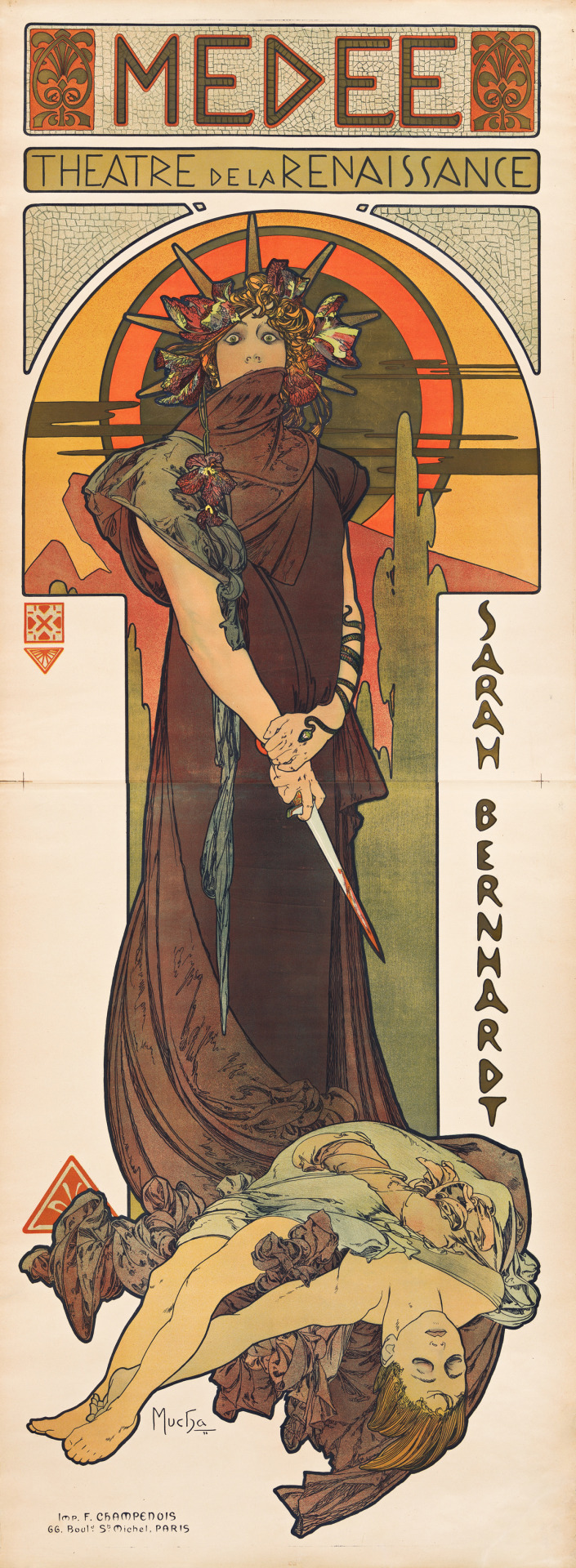

some of sarah bernhardt’s titular roles in posters by alphonse mucha
la dame aux camélias (1880), la tosca (1887), gismonda (1894), lorenzaccio (1896), medée (1898), hamlet (1899)
#sarah bernhardt#alphonse mucha#art#thespian tag#there are many names in history#i love love love the horror on her face in medee! very reminiscent of the repin painting of ivan the terrible & his son ivan (the murdered)#very emily wilson voice could the rage of a girl do this#sometimes i make stuff#i mean. mucha made these but this is a certified kit nedlittle post
6K notes
·
View notes